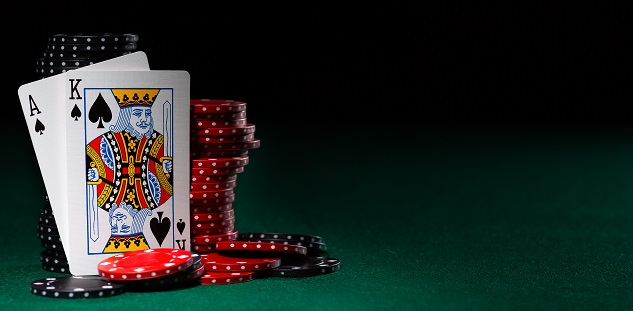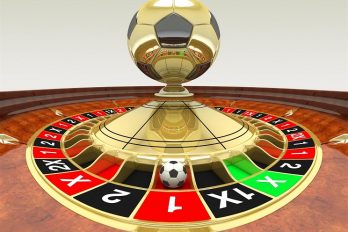Common Mistakes Made by Blackjack Players
Up to €1000 Plus 22 Free Spins
Up to €1000 Plus 22 Free Spins

Blackjack is one of the most popular games at any casino. The best thing about the game is that it can be enjoyed by players of all abilities. As you’re playing against the dealer, it doesn’t matter whether you have years of experience under your belt or you’re just starting out. With no opponents to beat, you’re sure to win the game if luck is on your side. While blackjack requires little skill, there are certain mistakes that will cost you the game. In this article, we explore some of the common mistakes made by Blackjack players so you know what to avoid!
Following the Dealer’s Strategy
Avid gamblers will be aware of the dealer’s strategy. In most circumstances, the dealer will hit on 16 or less and stand on 17 through 21. As the dealer always seems to win, some gamblers decide to follow this strategy to the letter. While this can sometimes work in your favour, there are potential problems, too. The main problem is that this strategy doesn’t consider one important point about the rules of blackjack: if you go over 21, you lose regardless of whether the dealer subsequently busts. Like every casino game, this rule gives the casino a natural advantage. With this in mind, following this strategy will not always work.
Standing on a Soft 18
The second mistake is standing on a soft 18 when the dealer shows a nine, ten, or ace. For many players, this strategy seems to make perfect sense. As an 18 is a pretty good hand, it seems silly to risk hitting and going bust. While this is all well and good, 18 isn’t quite good enough if the dealer shows a 9, 10, or ace. In this case, you’re likely to lose if you stand on your soft 18 and the dealer displays a strong hand. In fact, whether you stand or hit, you’re going to lose more times than you win overall with the previous combination. However, you will increase your odds of winning if you choose to hit instead of stand.
Standing with a Pair of Eights
There’s no question that 16 is a bad hand to have, particularly when the dealers up card is a ten. In this situation, many players believe that they are guaranteed to lose, and are reluctant to spend more money and split with the risk of losing both hands. However, splitting is actually the best way to go. By doing so, you will have two hands starting with a total of eight. As you can probably tell, this is much better than one hand starting with 16! Over time, you’re likely to win over twice as much cash with an 8 vs 10 as opposed to a 16 vs 10. With this in mind, it’s best to cut your losses and split your hand in two.
Standing with Soft 17
Inexperienced players often choose to stand on 17. If you’ve got a hard 17, standing is your best bet; however, that’s not the case with a soft 17. For those who are unsure, a soft 17 is a hand that contains an ace counted as 11. If your hand consists of an ace and a 6, or an ace and a 2 and a 4, you should never stand. In fact, you should avoid standing on any soft hand with a total of 13 through 17, regardless of what the dealer shows. When you have a soft hand, you can hit and never bust because you’ve always got the option to count the ace as 1. With this in mind, it’s better to risk hitting to improve your total rather than standing with a weak hand.
Hitting When the Dealer Shows a Weak Upcard
The next mistake is hitting 12 through 16 when the dealer shows a 2 through 6. If you make this mistake, it’s likely that you don’t understand the basics of how to win the game. All too often, the player believes he has a weak hand so chooses to hit rather than stand. However, that is not always the case! If consideration is given to the dealer’s upcard, it’s clear that a total of 12 through 16 isn’t too bad at all. If the dealer shows a strong upcard of 7 through ace, your best bet is to hit. However, if the dealer shows a weak upcard of 2 through 6, you’re far better off standing. When the dealer has a weak upcard, his probability of busting is high. In this situation, you don’t want to risk busting when the dealer is already likely to bust. With this in mind, it’s best to stand on 12 through 16 when the dealer shows a weak hand of 2 through 6. However, there is one exception to the rule: if the dealer shows an upcard of 2 or 3 when you hold a 12, it’s best to hit.
Splitting 10’s
Newbies often believe you should split 10’s when the dealer has an upcard of 5 or 6 because you’ll win two hands if he busts. Unfortunately, that’s not always the best option. Instead, you’re much more likely to win by standing on 20 as opposed to splitting your hand in half. Don’t risk breaking up a strong hand just to win more money.
In Summary
Whether you’re an experienced gambler or you’re just starting out, avoid making the mistakes above. If you’re new to Blackjack, consider practising online before using a physical casino. Today, many betting sites allow you to gamble for free. Although you won’t make any money this way, you’ll be able to get to grips with the game before risking your hard-earned cash.



